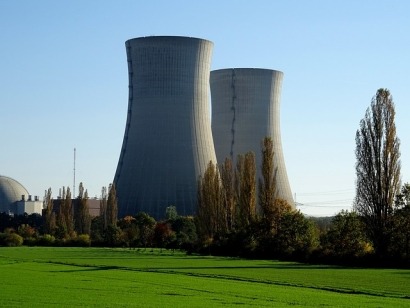
However, much positivity surrounds using nuclear energy in green initiatives and low- to no-carbon power. Is it enough to penetrate the other kinds of renewables entering the scene, or will its perception be its downfall?
The uranium necessary to cause a reaction has an immense power density per inch. Though humans could mine it all, nuclear power could run the planet for billions of years — and the material is recyclable, extending its life span. However, mining practices for raw materials are invasive, and any power source reliant upon destructive methods is frowned upon.
Nuclear waste is also hazardous to surrounding land and wildlife, despite not emitting air pollutants. Few dangerous waste benchmarks worldwide impact nature and worker safety quite as much. Power plants could repurpose byproducts as more fuel, but this isn’t as common as it could be.
It’s turning some regions of the world against nuclear altogether. Some nations are building more reactors, like Finland. Others, like Germany, are phasing out existing plants for other renewables and clean energy supplements like carbon capture. Some say it’s better to push green energy in the name of closing coal and natural gas operations. The messaging and advocacy for nuclear power are disjointed.
Whether nuclear has a future in energy requires professionals to look at it through an environmentalist lens. Reaching net-zero requires humans to make fossil fuels obsolete because they pollute and emit greenhouse gases. Nuclear energy, through fission, emits no carbon, reducing the number of toxins in the environment that cause habitat, wildlife and human health distress.
National and governmental investments and advancements in solar panels, wind turbines, hydropower and hydrogen electrolysis generators are increasing. There may need to be more energy outlets to sustain the planet due to current inefficiencies. Nuclear could supplement them as a greener alternative to fossil fuels, despite relying on mining resources to function.
Nuclear is the gateway to long-term sustainability because it’s accessible now, and infrastructure exists. A complete and immediate transition to renewable energy isn’t possible, so there must be a midway point — nuclear power is that medium. Other sources still have to build up and wait on grid modernization to become relevant.
Nuclear energy has a smaller physical footprint than other renewable energy sources. Wind farms receive bad press because of the sheer amount of public land required — one square mile versus 360 for wind turbines. Nuclear energy only needs a fraction of that space to work, and it’s a consistent power source that’s not reliant upon weather conditions or influences outside the plant’s control.
Massive nuclear power plants scare citizens, environmentalists and energy professionals, whether they’re old or in mid-construction. Explaining the reality and value behind nuclear energy through education is the first way the sector can dispel exaggerated and false information.
Nuclear power accounts for 10% of the world’s electricity, keeping the lights on in areas affected by natural disasters because nuclear generators are quick to work without risking durability. More regions of the world are seeing an increase in unexpected weather-related disasters, and communities could rely on nuclear generators to increase resilience.
Additionally, reimaging reactors for small-scale purposes could make the power source less intimidating to adopt. In the last 20 years, small modular reactors (SMRs) and lead-cooled fast reactors (LFRs) have made nuclear power more approachable and cost-effective. Plus, it eliminates concerns about mining new uranium because it can work with what humans have until nuclear waste reuse becomes more standardized.
No energy generation method is ideal. Energy emits pollutants or carbon, is unsafe or presents impractical adoption strategies. Power grids in every nation must upgrade to sustain smart renewable energy generation and distribution, which takes time.
In the meantime, humans have no time to waste in eliminating fossil fuel reliance and greenhouse gas stressors on the atmosphere, solidifying nuclear energy’s future. For now, nuclear power is the failsafe as nations make moves to go green.

